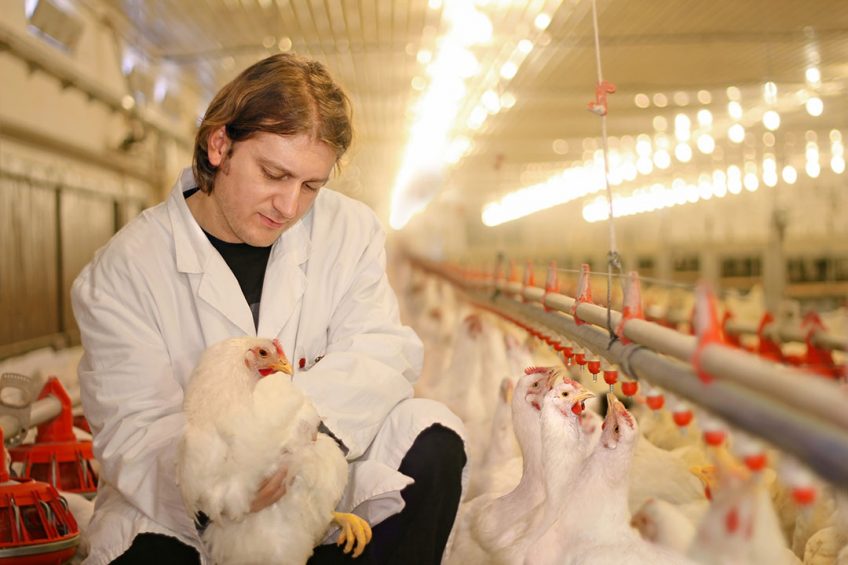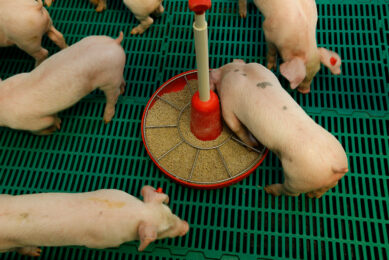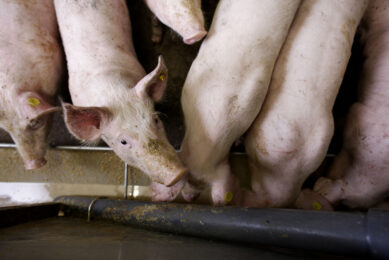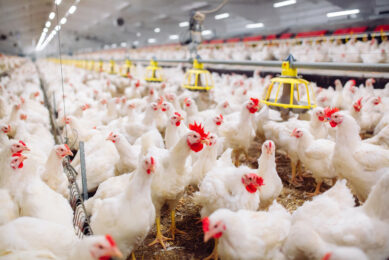Strategies to master heat stress in poultry

Strategies to alleviate the detrimental effects of heat stress on the productivity of poultry should be based on several complementary approaches including housing conditions, management practices and nutritional strategies.
Heat stress is currently considered to be a major environmental factor impairing welfare and productivity of poultry. The burden exerted on the profitability of poultry farming will grow worldwide in the future as genetic selection for fast growth increases animal sensitivity to heat stress. In addition, poultry markets of warm regions are forecast to grow in the following decades. Heat is produced in the body as a consequence of various chemical reactions associated with intermediary metabolism. Homeostatic mechanisms regulating body heat production and body heat loss allow keeping the body core temperature relatively constant. No additional energy is required to dissipate or create heat when birds are in the thermoneutral zone. Birds, however, have to be active in dissipating body heat when ambient temperature exceeds the upper critical temperature threshold. Such physiological state is called heat stress. Upon heat stress, heat loss is increased through radiation, convection, conduction and evaporation.
Behavioural/physiological consequences
Under high ambient temperature and high stocking densities, it becomes increasingly difficult for birds to lose heat by conduction or convection. Respiratory evaporation becomes the major heat loss mechanism. In such situations, birds also limit activities that may generate additional heat, such as eating or moving. Water intake is concomitantly increased due to changes in endocrine regulation. Heat stress leads to several dysfunctions:
– Respiratory alkalosis
– Hormonal changes impairing immunity and growth
– Decreased gut wall integrity, which is explained by:
- Osmotic stress, which induces body water losses
- Oxidative stress, caused by free radicals production which can damage biological molecules (DNA, proteins, lipids, etc)
These changes lead to reduced performance, especially feed efficiency, growth rate or egg production.
Nutritional strategies to tackle heat stress
Nutritional solutions can help poultry to cope with heat stress, with two objectives. First, to reduce diet induced thermogenesis by selecting nutrients having a low heat increment. Second, to provide birds with specific bioactive nutrients that correct the physiological dysfunctions associated with heat stress.
- Energy sources: Maintenance energy requirements increase as more energy is required for panting. Feed intake is concomitantly reduced. Increasing dietary fat levels at the expense of carbohydrates may reduce diet-induced thermogenesis, while increasing energy density. This may compensate for the lower feed intake.
- Crude protein content: Imbalanced amino acids profiles exacerbate the heat increment induced by protein consumption due to the energy costs associated with poor nitrogen retention and nitrogen excretion. Hence, reducing crude protein content using feed grade amino acids may be a sound strategy to cope with heat stress.
- Increase dietary electrolyte balance (DEB): Lost by hyperventilation, it is possible to supply extra electrolytes, such as sodium and potassium, to restore the DEB of poultry.
- Feeding specific bioactive nutrients to address specific physiological needs.
Mixscience has developed the solution, beTaHit, composed of specific bioactive ingredients, which are vectorised with a fatty matrix. This specific fatty matrix protects the ingredients over time in order to ensure maximum efficiency. The product has been tested at the Mixscience Research Center (MRC), in an experimental design comparing three groups: control (no dietary supplementation), B1 (1000 g/T betaine HCl) and B2 (750 g/T beTaHit). Ross 308 broilers were kept under high temperatures, applied every day from day 21-35 (28˚C for 6 hrs; 30˚C for 4 hrs; 24˚C for 12 hrs). Birds fed with the product had a significantly lower FCR, with respectively -0.03 pts and -0.06 pts in comparison with control diet and B1 diet (Figure 1). The beTaHit diet had higher breast meat yields than others diets (+1.06% vs control, +0.81% vs B1). In comparison to control, breast production costs were reduced by almost 2% when feeding B1 and by 6% when feeding the solution.
Figure 1 – Effect of dietary supplements*on performance of broilers at 35 d of age.

In this trial, osmotic stress sensitivity was also evaluated using the hemolysis score. The hemolysis score is the lowest salt concentration at which red blood cells are lysed when put in a hypotonic solution. The less the concentration is, the more the cell are resistant to a stress. Birds fed the supplement had a significantly lower hemolysis score than their control (-7%), thereby indicating an improved osmotic stress resistance.
These benefits of the product have been confirmed in another trial taking place at the Veterinary School of Dakar (EISMV) in Senegal. Cobb500 chicks received one of the following feeds from 0 to 42 days of age: control (negative control, no additive) or supplemented diet (control + 750 g/t beTaHit). Temperatures during the trial were between 22°C and 27.6°C. The body weight of supplemented chickens was significantly improved at 42 days compared to the control group (2,476 g vs 2,321 g, P<0.05). the supplemented group had a higher feed intake (114.7 vs 113.5 g d, p=”0.67)” and a better feed conversion ratio compared to the control group (2.03 vs 2.14, p><0.01). with the supplement (750 g t), breast meat weights were significantly higher, and carcass yields were numerically increased (>Figure 2).
Figure 2 – Effect of dietary supplements* on performance of broilers at 42 d of age.

In conclusion, different nutritional strategies can be implemented in a comprehensive program aiming at correcting the negative effects of heat stress on performances of poultry. The use of nutritional solutions have proven to alleviate the detrimental effects of high ambient temperature and improve performance of poultry. BeTahit supplementation demonstrated its efficacy under heat stress circumstances for poultry, rising in average a gain 0.05 to 0.07 pts of FCR, and a return on investment (ROI) of at least 3, depending on the context.
References available on request
All information only for export outside Europe, USA and Canada
Author: Claire Le Dain, Product Manager, Mixscience






